Mornings in Aarey forest wear a blanket of fog these days. Fitness enthusiasts can be seen along the quiet, serene roads bordering the forest.
I am here as part of a forest foraging and traditional ecological knowledge workshop and plantation in the tribal heartland of Mumbai’s Aarey. The workshop is conducted by the Waghoba Habitat Foundation (an environmental conservation non-profit organisation) and No Footprints (a travel company that promotes community-based stories lost due to constant urbanisation).
Vanita tai captured a crab during our foraging expedition.
| Photo Credit:
Purnima Sah
A bunch of 20 Nature enthusiasts from the city join the workshop and we form a circle as our facilitator arrives near the Aarey tabela (cow shed), our meeting point. Environmentalist, educator and documentary film-maker Sanjiv Valsan begins by briefing us about the history of Aarey and the purpose of this workshop.
“Officially, this area is recognised as Aarey Milk Colony but these days it is also recognised as Aarey Forest because of the protests that happened here a few years ago to save the forest. The former Government recognised it as a forest and 812 acres of land was declared as a reserved protective forest but 1,200 acres of forest still need to be protected and it couldn’t be done because the Government changed,” says Sanjiv.
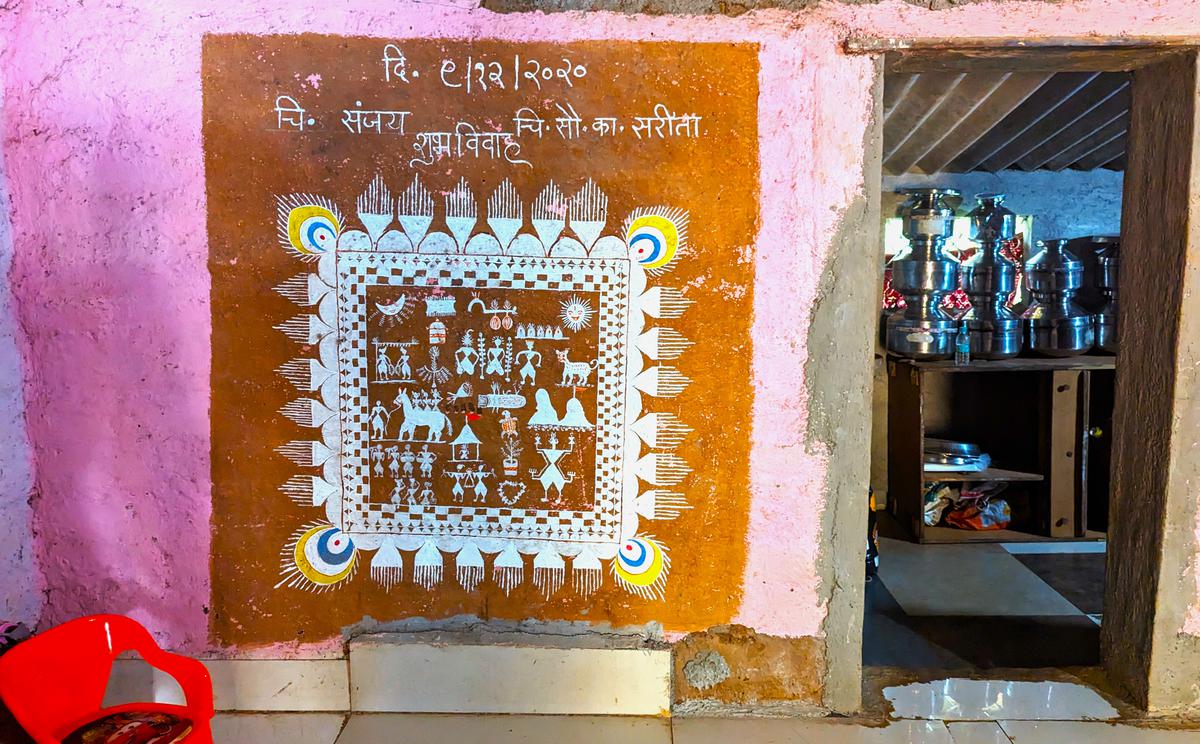
Warli painting inside a home of a family in Aarey forest.
| Photo Credit:
Purnima Sah
“In the ‘70s, Government gave away land to Film City then came the Jogeshwari–Vikhroli Link Road, a dysfunctional veterinary college followed by multiple real-estate projects that sprung up by clearing parts of Aarey, which was extended till Powai and Thane,” says Sanjiv.
He adds that we are at Khambacha Pada village where one of the 31 cow-sheds of Aarey Milk Colony was set up with a purpose of rehabilitating scattered cattle-sheds in Mumbai city at one place. “Over the years the city is getting closer to the forest and the forest has only become smaller for the tribal people – once called jungle cha raja (king of forest) – who have been living here since the 11th Century,” adds Sanjiv.
Let’s begin the foraging
As our other facilitator, Vanita Thakre (fondly called Vanita tai) arrives with cloth bags, we are told to follow her. Vanita tai is a tribal rights activist, an organic farmer and social worker from Khambacha Pada.
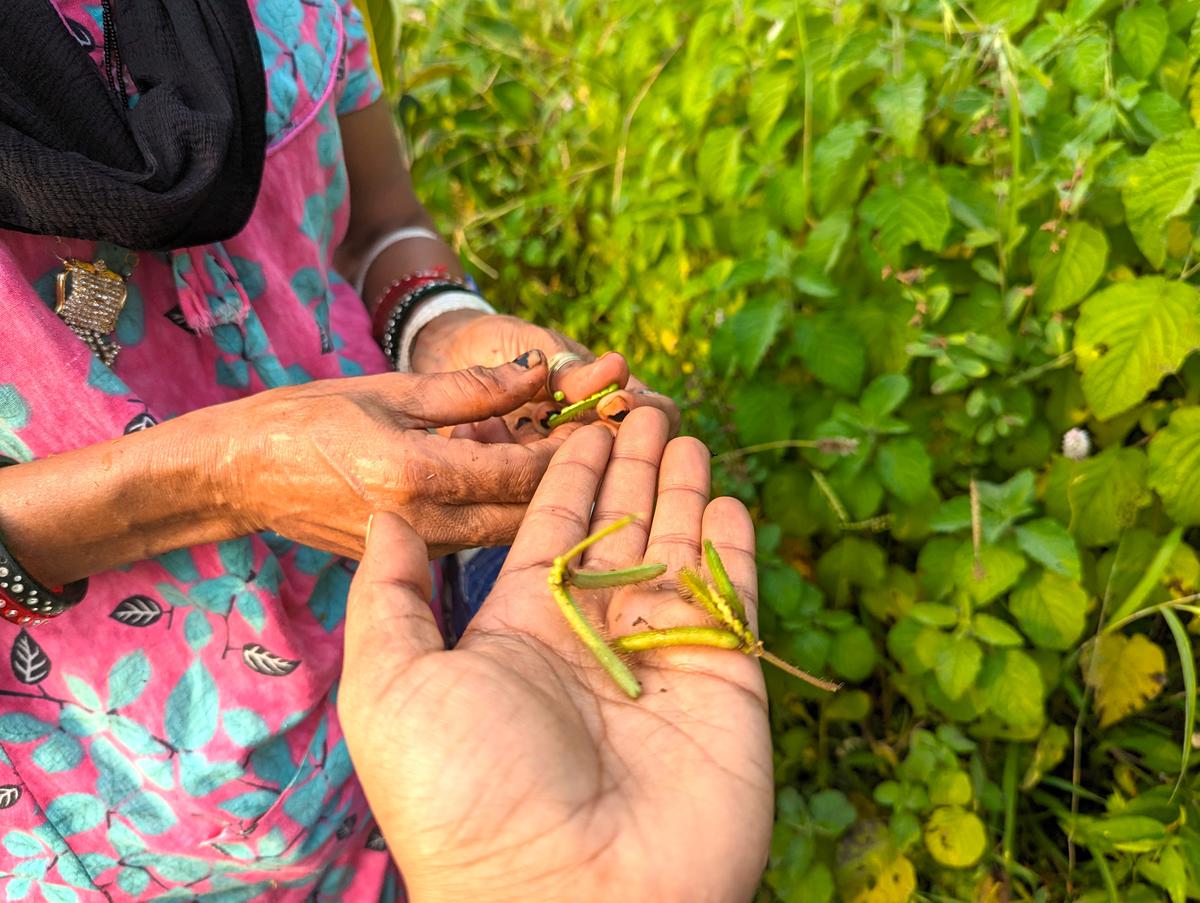
Jungli udad
| Photo Credit:
Purnima Sah
As we climb, we see feathery pink and white flowers that are called ‘kurdu’ in Marathi, common cockscomb in English. Vanita tai plucks some and makes a beautiful tiara for a participant. “The roots, stem, seeds and leaves of kurdu plants have medicinal properties. The leaves are eaten during monsoon and not after flowering,” says Sanjiv.
We pluck takla leaves (Cassia tora) that will be fried with garlic and chilli. “The plant is useful to the forest as it fixes nitrogen in the soil. In some tribes in India, the beans/seeds of takla plant are used as a coffee substitute since it has the exact aroma of coffee,” says Sanjiv.
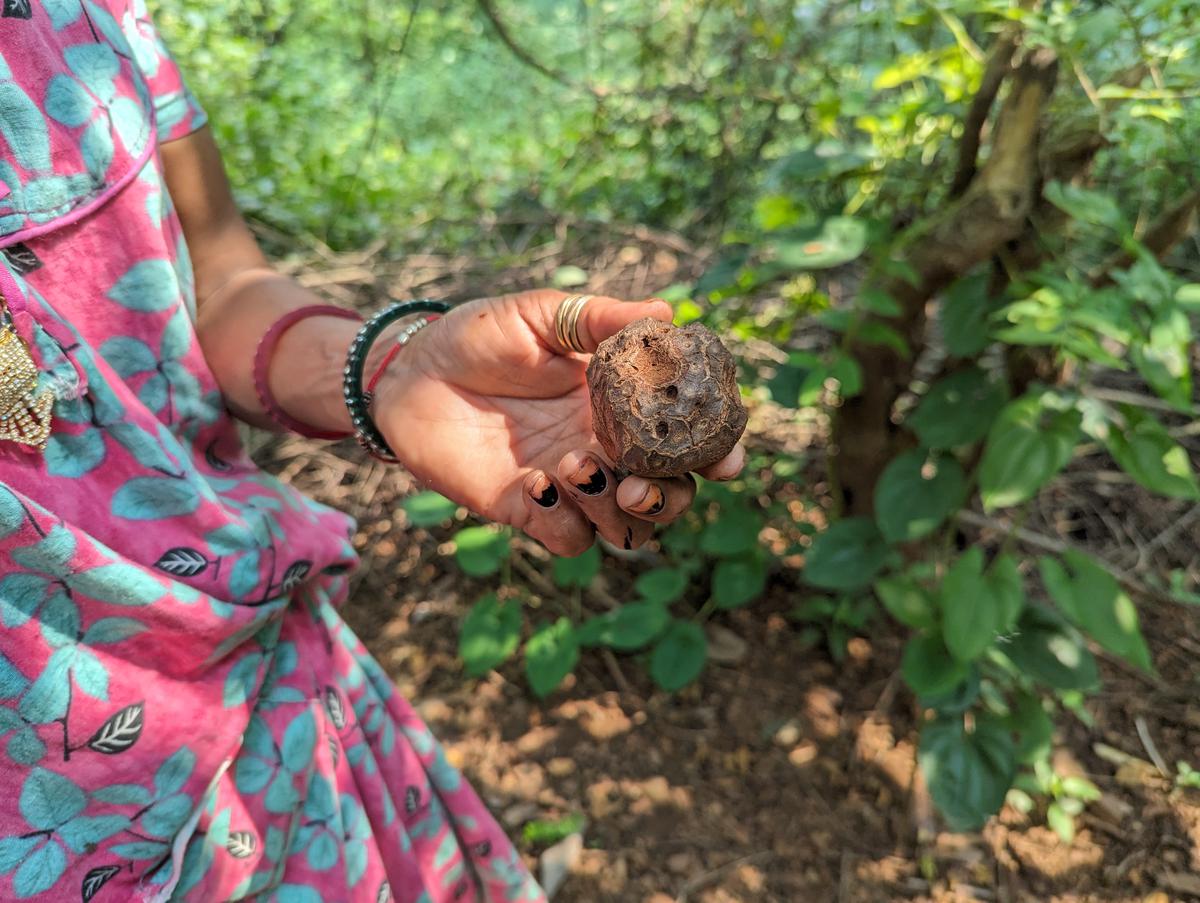
Wild diascorea species tuber from Aarey forest.
| Photo Credit:
Purnima Sah
Vanita also plucks kanchan leaves, which are eaten as a seasonal green vegetable chutney, jungli ambadi . “Jungli ambadi is good to fight seasonal colds and coughs,” she says. We spot flowers of raan bhindi (wild okra), jungli udad (wild gram), eaten either raw while hiking, or cooked when hard and ripe as dal. Pointing out the flowers of spiral ginger Vanita says, “The konsai kandh is a wild tuber and great source of food.”
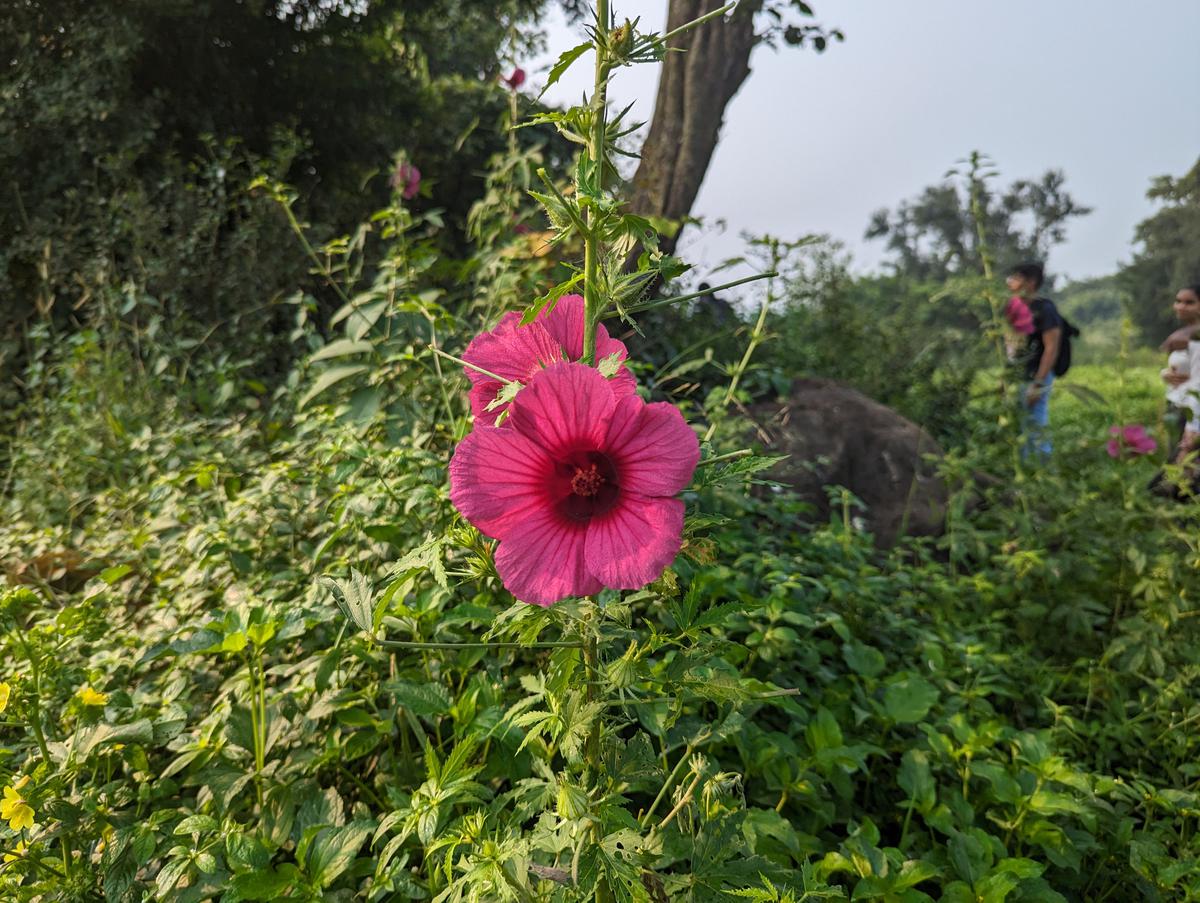
Jungli ambadi is eaten as chutney mostly and is also good to fight seasonal colds and coughs.
| Photo Credit:
Purnima Sah
The purpose of this workshop is to share traditional knowledge through sight, sound, touch and taste and highlight the importance of conserving the ecosystem. All this while supporting the botanical and cultural wealth of the forest that fights not just hunger but also saves us from climate crisis, says Sanjiv.
He adds that this is part of the Rewilding Aarey project by Waghoba Habitat Foundation, which covers afforestation, tribal livelihoods, urban-tribal friendship, conservation of forest and traditional ecological knowledge of indigenous people.
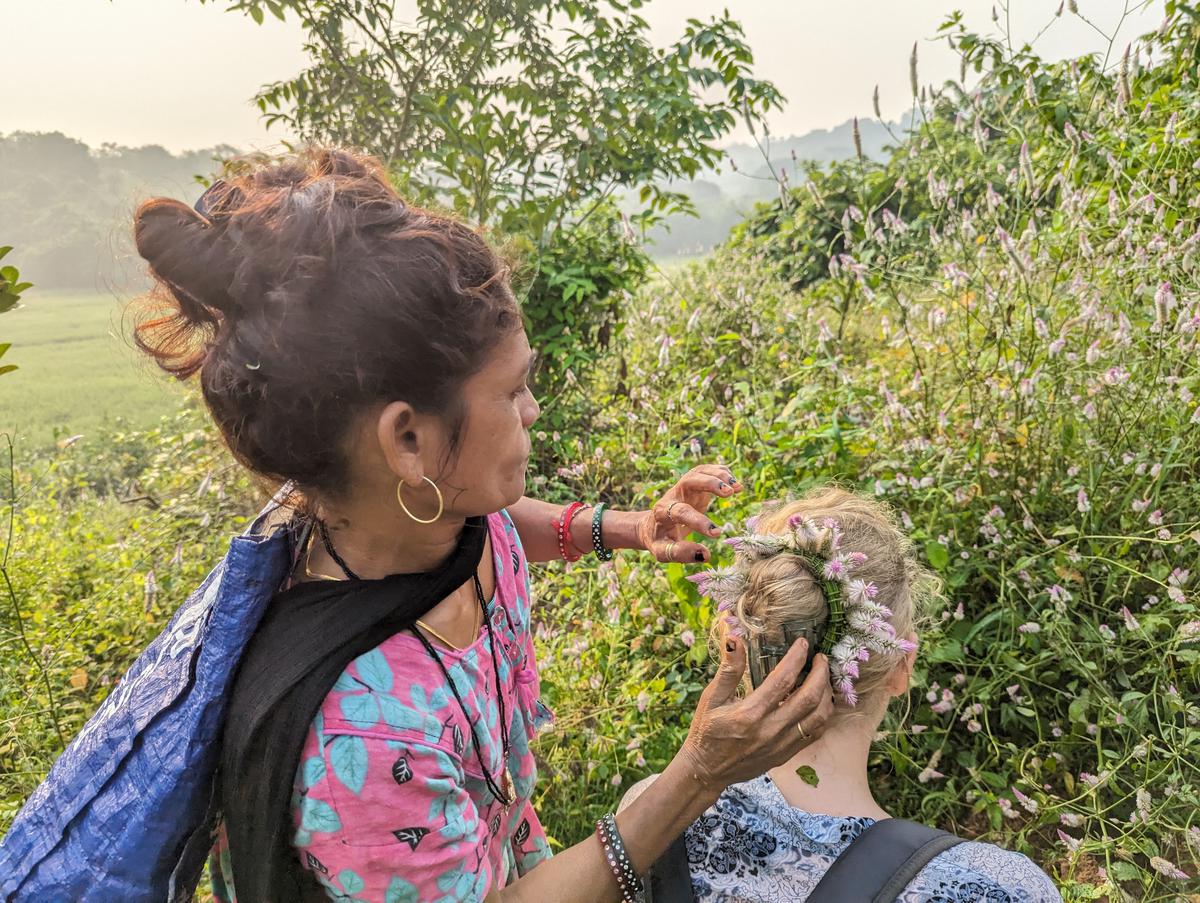
Vanita tai plucks some kurdu flowers and makes a beautiful tiara for a participant.
| Photo Credit:
Purnima Sah
As we pass a small stream Vanita tai decides to get into the water and catch a crab. She does a happy dance, singing “Chimbori…chimbori … now we will party!” when she catches one.
All things forest at this banana platter lunch
We settle for lunch at Vanita’s home, where she has grown many saplings such as betel leaf, which she sells in the town. As we sit on mats in the verandah, she offers us water, tea, and boiled karanda (Dioscorea bulbifera), which tastes like an earthier version of the potato. Sanjiv educates us about this interesting tuber saying, “It is one of the oldest foods in the Indian sub-continent that was a staple way before the Portuguese brought potatoes. Karanda is far more nutritious and ecologically sustainable since it does not require irrigation. It is also drought tolerant.”
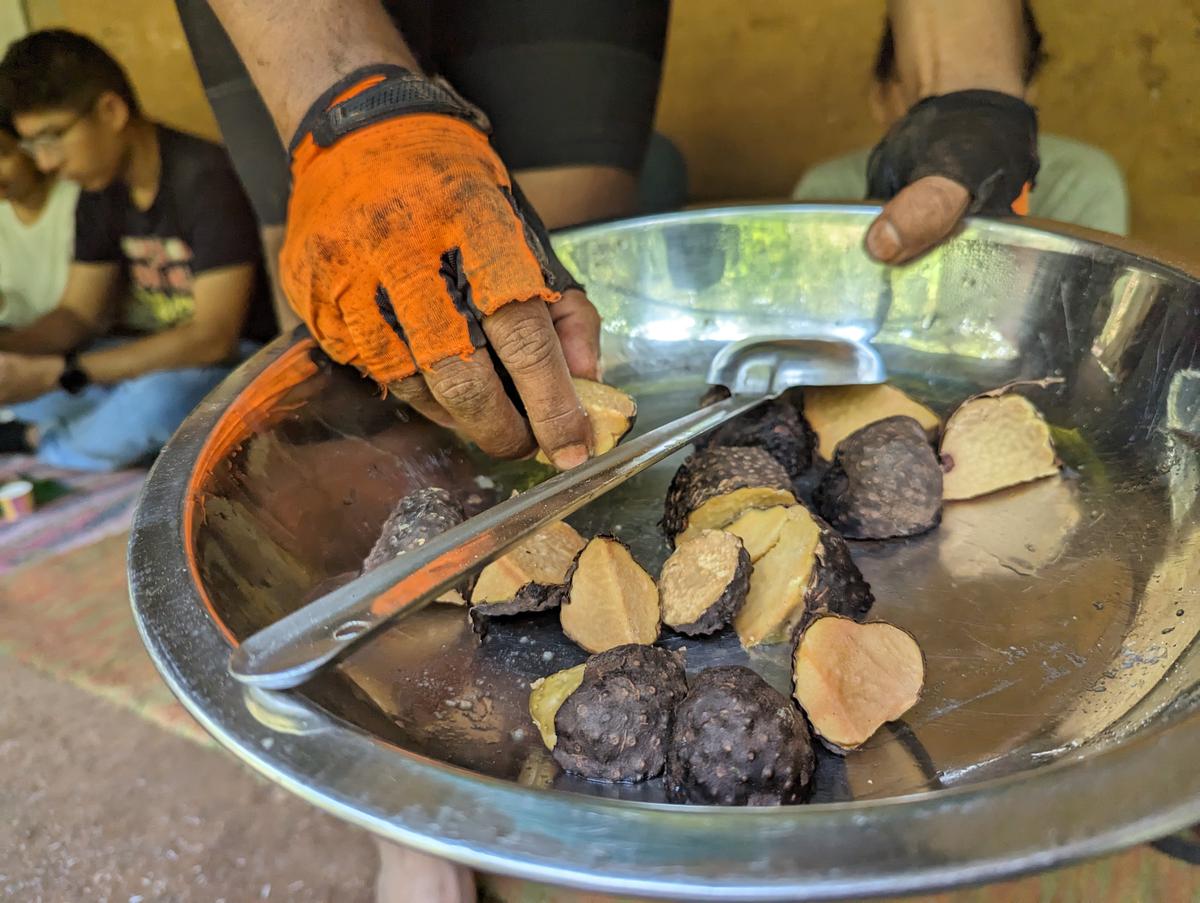
Boiled karanda is a tuber species that is one of oldest foods in the Indian sub-continent that was a staple way before the Portuguese brought potatoes.
| Photo Credit:
Purnima Sah
At the other end of the veranda is the open kitchen chulha (stove made of clay and bricks) where Tetu (a wild bean), native to Aarey, is being cooked.
On a banana leaf, we are served wild sesame (khurasni) chutney, a dish made from tetu. There was padwal and loth with dry fish, which has a smoky flavour. (Loth is a wild version of the elephant food yam.) Also spoon of pungent, fishy bombil chutney, followed by tetu, dudhi ambadi, tera patta and bhopla, naachni (red millets) bhakri, loth and padwal with tangy ambadi. We try the crunchy nala bhaji (Kankon/ Thai water spinach) followed by soft-shell crab. There is also a salad of radish, onion, lemon and tomato, all grown inside the forest.
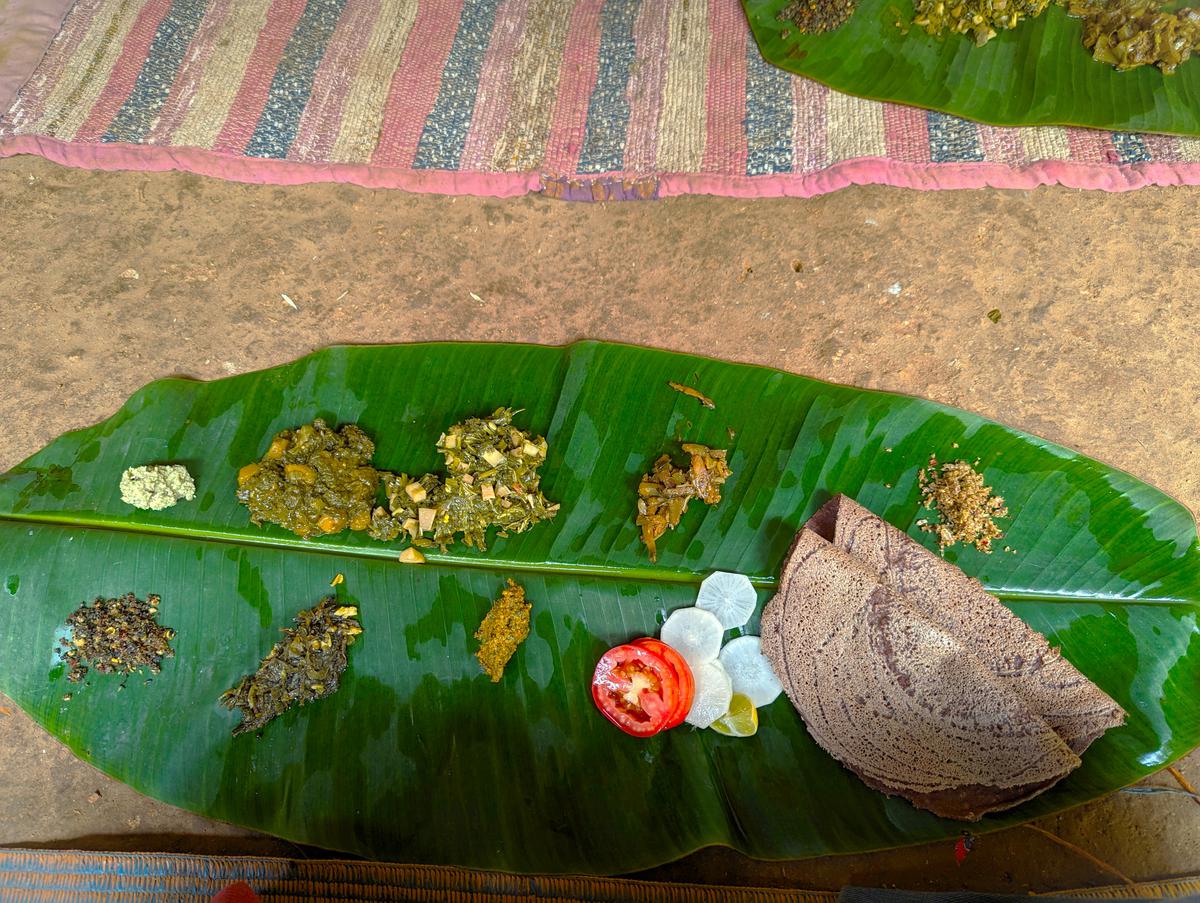
On a banana leaf, we were served wild food that is all grown inside the forest.
| Photo Credit:
Purnima Sah
Dessert is made out of mahua flowers and naachni, which tastes like a vegan kheer. It is prepared using whole spices like cinnamon, cloves and pepper, which add even more complexity to the distinctive floral aroma of mahua. The mild sweetness from the mahua flower’s works as a natural sugar content, while naachni lends a comforting creaminess without the need for dairy products.
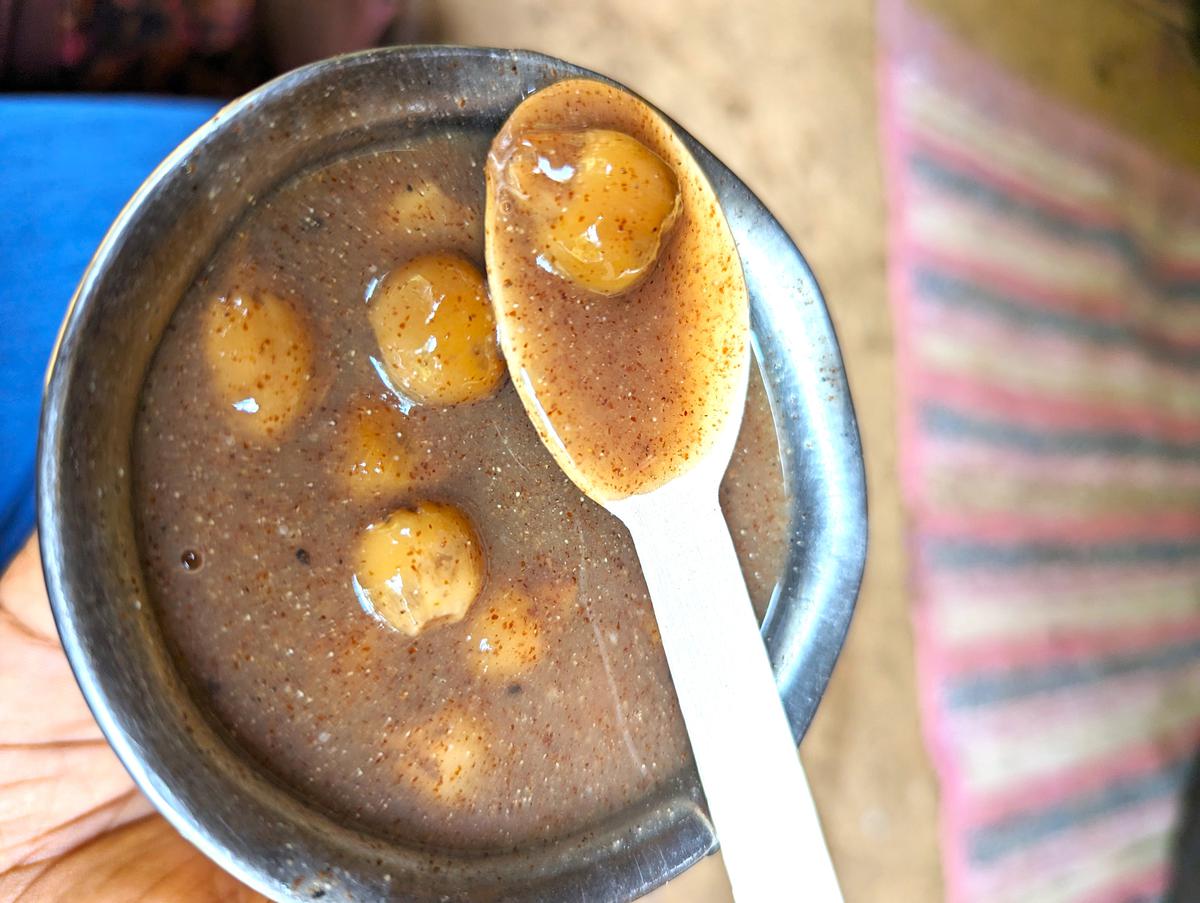
A dessert was made out of mahua flowers and naachni.
| Photo Credit:
Purnima Sah
The No Footprints founders Harshvardhan Tanwar and Eesha Singh’s say they run these walks to preserve history, culture and stories that are being constantly lost due to urbanisation. “A city like Mumbai is unique as it has an urban jungle and a thriving population of flora and fauna. Foraging is one of the most eco-sensitive ways of eating because it is seasonal. Food that is there in the forest, also talks to you about a community,” says Harshvardhan.
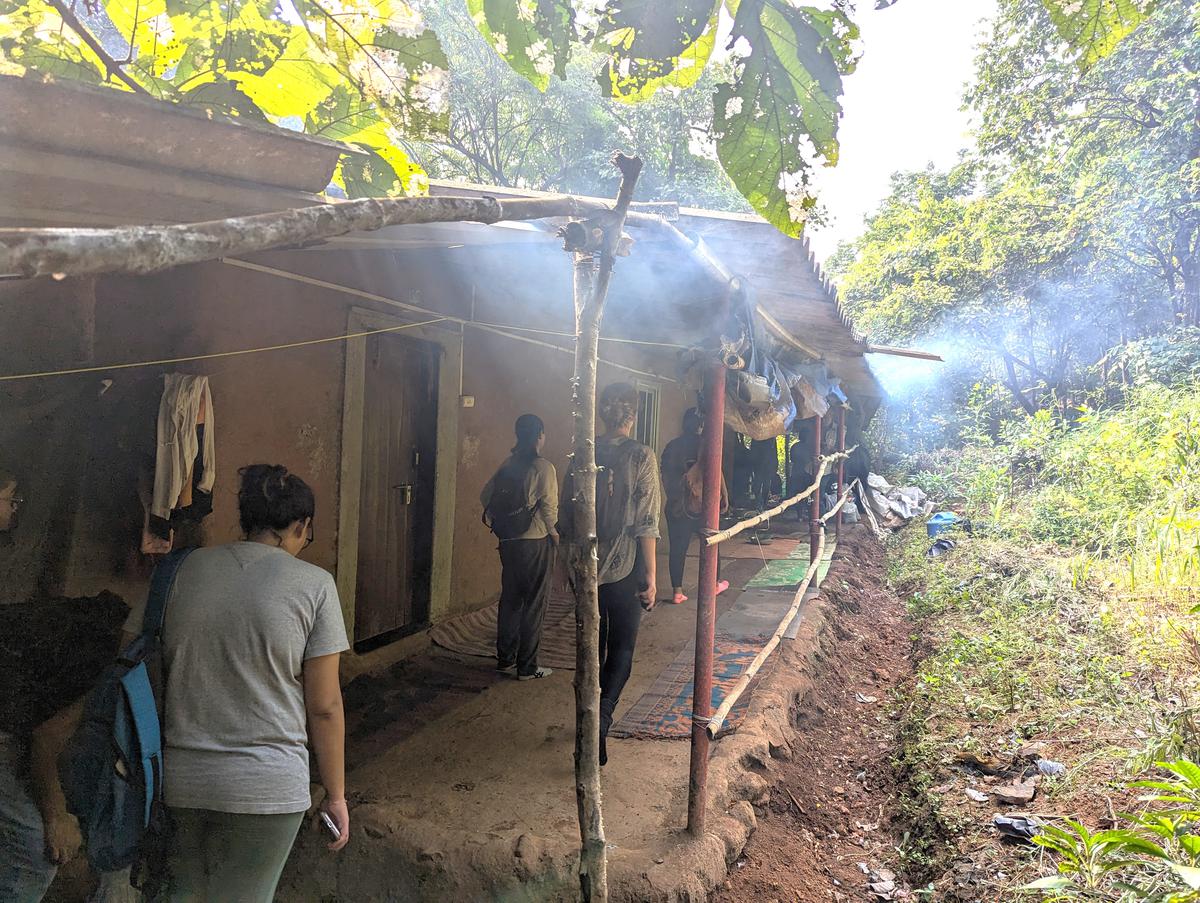
At Vanita tai’s home we sat on mats in the verandah and she offered us water, tea, and boiled karanda as snacks.
| Photo Credit:
Purnima Sah
Brian Phillips, co-founder of Waghoba Habitat Foundation adds, “Over the years there is a new narrative that equated saving the forest with the right to land with wild foods. Among the tribals, there is no concept of land rights. With our engagement, they are now seeing their wild food as a symbol of jungle wealth and also as their identity.”
Foraging and traditional ecological knowledge workshop and plantation in Aarey, Mumbai happens twice every month. To participate, contact: +91 98671 82688 and +91 98922 12133